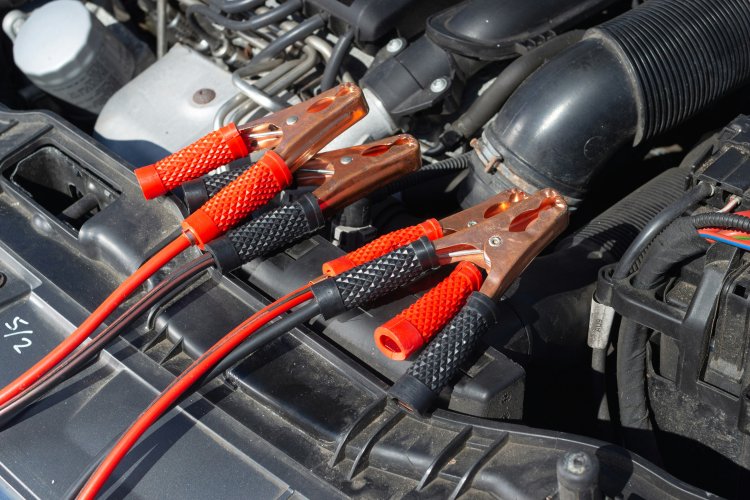Closing the Loop: How LOHUM Is Powering a Sustainable Future Through Lithium-Ion Battery Recycling
The global transition toward electric mobility and renewable energy storage is accelerating. As electric vehicles (EVs), portable electronics, and grid storage become more widespread, the demand for lithium-ion batteries is projected to skyrocket—posing both a tremendous opportunity and a significant environmental challenge.
Share this Post to earn Money ( Upto ₹100 per 1000 Views )

The global transition toward electric mobility and renewable energy storage is accelerating. As electric vehicles (EVs), portable electronics, and grid storage become more widespread, the demand for lithium-ion batteries is projected to skyrocket—posing both a tremendous opportunity and a significant environmental challenge. With finite reserves of critical minerals like lithium, cobalt, and nickel, the world is beginning to realize that efficient recycling and reuse of battery materials is not just a choice—it’s a necessity.
At LOHUM, we believe that sustainability must be embedded at the core of energy innovation. Our approach to lithium-ion battery recycling, reuse, and material repurposing offers an integrated solution to one of the most pressing challenges of the green transition: how to manage end-of-life batteries in an economically and environmentally responsible manner.
The Growing Pressure of Lithium-Ion Battery Waste
According to the Department of Energy, the battery market could grow tenfold within the next decade. With this surge comes a growing volume of lithium-ion battery waste—much of which risks ending up in landfills if not addressed proactively. The costs of the three most expensive battery cathode materials—cobalt, nickel, and lithium—have seen price fluctuations of up to 300% in a single year, despite EV battery prices dropping by over 90% in the past ten years.
Yet the pressure is not just economic. The environmental toll of mining virgin materials includes water resource depletion, deforestation, hazardous runoff, and human rights concerns. For instance, over 60% of the global cobalt supply originates from the Democratic Republic of Congo, a region plagued by conflict and unethical mining practices. The need to decouple our clean energy future from destructive extractive industries is more urgent than ever.
The LOHUM Approach: Circularity That Delivers
LOHUM’s mission is to decarbonize energy storage by extending the life of critical battery materials and minimizing resource depletion. Through our proprietary technologies, we extract, refine, and upcycle battery components with minimal environmental impact, creating a true circular economy for battery materials.
Unlike conventional pyrometallurgical processes, which are energy-intensive and produce toxic emissions, LOHUM leverages a combination of hydrometallurgy and direct recycling. In direct recycling, the valuable cathode compound is preserved and refunctionalized, avoiding the need for full reprocessing. This process not only retains material value but also significantly cuts down on emissions and energy usage.
Recent breakthroughs in cathode refurbishment—such as increasing porosity to enhance lithium-ion transport—have demonstrated that recycled cathodes can charge faster and last longer than those made from virgin materials. Our methodology ensures optimal recovery of high-value compounds while maintaining structural integrity, enabling recycled materials to match or exceed the performance of new ones.
Policy as an Accelerator: Aligning with India’s Regulatory Vision
India’s regulatory landscape is evolving to support circular battery ecosystems. The lithium-ion battery waste management rules, introduced under the Battery Waste Management Rules 2022, require producers to ensure collection, recycling, or refurbishing of batteries through Extended Producer Responsibility (EPR). This landmark policy positions India as a frontrunner in closing the loop on battery materials.
At LOHUM, we actively support manufacturers and importers in aligning with these mandates. Our EPR solutions ensure full compliance with EPR paperwork for Li-ion battery, helping producers meet their obligations while lowering their carbon footprint. Through our infrastructure and expertise, we handle logistics, diagnostics, battery disassembly, and material recovery with a streamlined, end-to-end model.
By turning compliance into a competitive advantage, LOHUM empowers OEMs, battery manufacturers, and recyclers to not only meet regulatory goals but to lead the charge in responsible innovation.
Building a Domestic Battery Value Chain
A thriving domestic ecosystem for battery material recovery and reuse could have far-reaching implications—economically, socially, and environmentally. Today, a large portion of critical battery materials is sourced and shipped globally, adding to the carbon footprint and geopolitical dependencies.
LOHUM is at the forefront of building India’s first integrated supply chain for secondary battery materials. Our backward and forward integration—from collection and testing to material conversion and repurposing—reduces import dependency while creating high-value jobs and technological leadership in the green economy.
With our partnerships across OEMs, fleet operators, and government stakeholders, we are working to ensure that every EV battery sold is eventually recycled or reused, minimizing waste and maximizing value. By closing the loop, we are not just managing waste—we’re creating a sustainable supply chain for the battery economy.
The Road Ahead: From Battery Waste to Wealth
Recycling isn’t just about environmental stewardship. Research has shown that optimally recovered cathode compounds can be more profitable than those produced from virgin resources. As battery deployment continues to rise, recycled materials could represent a competitive, scalable, and environmentally preferable alternative for battery production.
At LOHUM, we envision a world where lithium-ion batteries are not a burden at the end of their life—but a source of renewed value. By advancing science, driving policy alignment, and building circular business models, we are reshaping the future of energy storage—sustainably, profitably, and locally.
Our journey is far from over. But with each battery we recycle, refurbish, or repurpose, we move closer to a world powered by cleaner, circular energy—one lithium-ion cell at a time.
Visit us at: Li-ion battery waste management
Originally published on: Sites Google
















